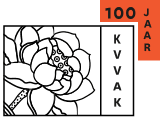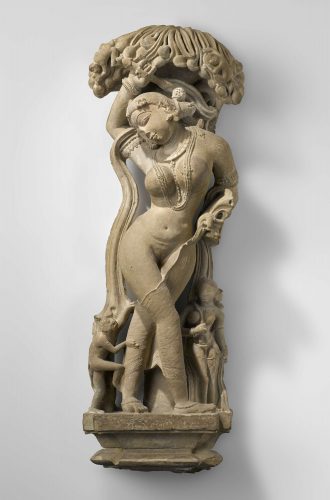
Young Scholars’ Symposium in Asian Art
Young Scholars’ Symposium in Asian Art 2019 - Approaches to the study of Asian Art in the Netherlands
SYMPOSIUM
The Royal Society of Asian Art in the Netherlands (Koninklijke Vereniging van Vrienden der Aziatische Kunst, KVVAK) organizes the Young Scholars’ Symposium in Asian Art on 22 June 2019.
At this symposium BA and MA students and PhD candidates will present their work on any aspect of Asian art and the art and material culture of exchange between Asia and Europe.
The symposium is held at the Rijksmuseum Amsterdam, the home of the KVVAK’s collection.
Please note that non-KVVAK members may register with the membership number 0000.
PROGRAMME
12:00 Registration at the Auditorium, Rijksmuseum
12.15-12.30 Welcome by Prof.dr. Anne Gerritsen
12.30-13.30 Session 1
Who is the four-faced deity from Ta Prohm, Angkor, at the Rijksmuseum?
Danny Eijsermans – Universiteit Leiden
Shilpa Gupta and 400 year VOC: Connecting past and present through different ‘posts’
Julia Alting – Universiteit Leiden, SOAS London
Shaping mosques in the nineteenth century: How colonial powers put domes to Islamic architecture in the Dutch East Indies and British Malaya
Natasha Santoso & Muhammad Buana – Universiteit Leiden
13.30-13.40 Reflection, Q&A, moderated by Prof.dr. Anne Gerritsen
13.40-14.00 Coffee/tea/water break
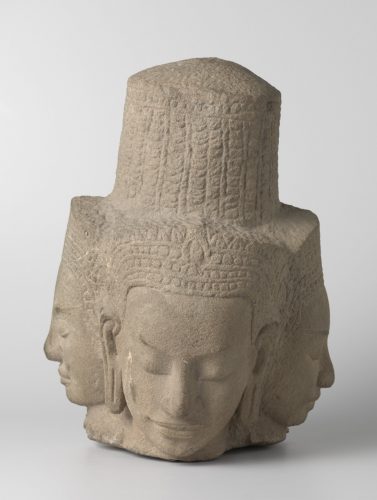
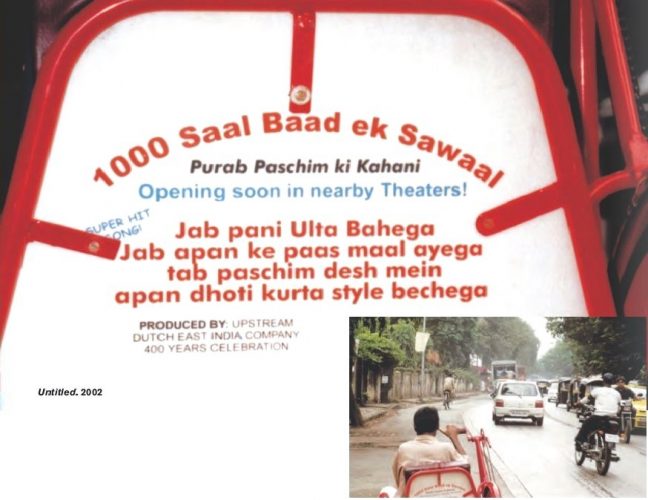
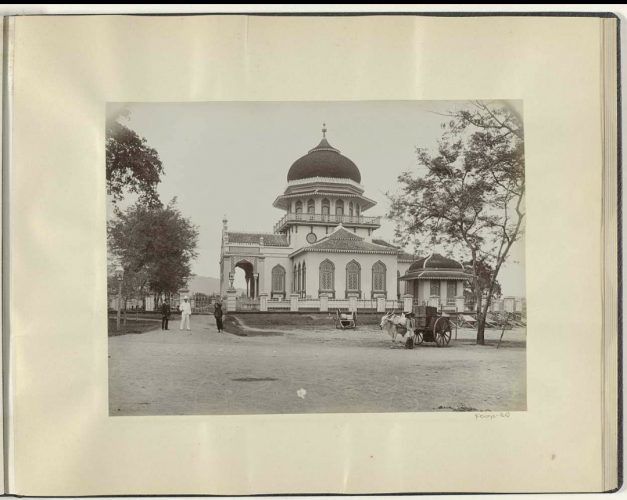
14.00-15.00 Session 2
The lacquered document case of Hendrick van Buijtenhem
Francesco Montuori – Universiteit Leiden
Jacob Coeman’s portrait of Pieter Cnoll and his Family (1655): A representation of seventeenth-century Dutchness
Hilda Groen – Universiteit Utrecht
Namban warriors: Arms, armors and accessories. The deeper meaning of Portuguese figure decorations on war-related objects
Martina Gonzato – Universiteit Leiden
15.00-15.10 Reflection, Q&A, moderated by Prof.dr. Anne Gerritsen
15.10-15.30 Water break
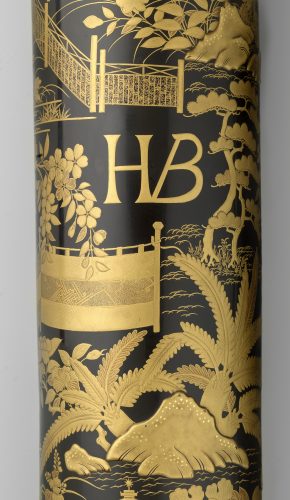
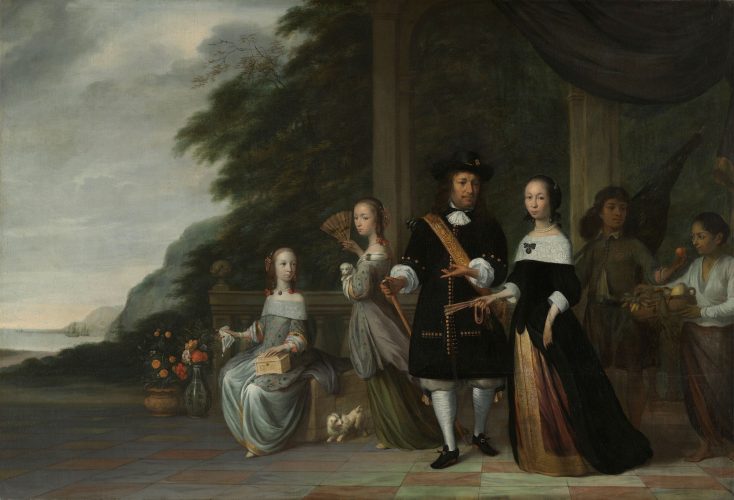
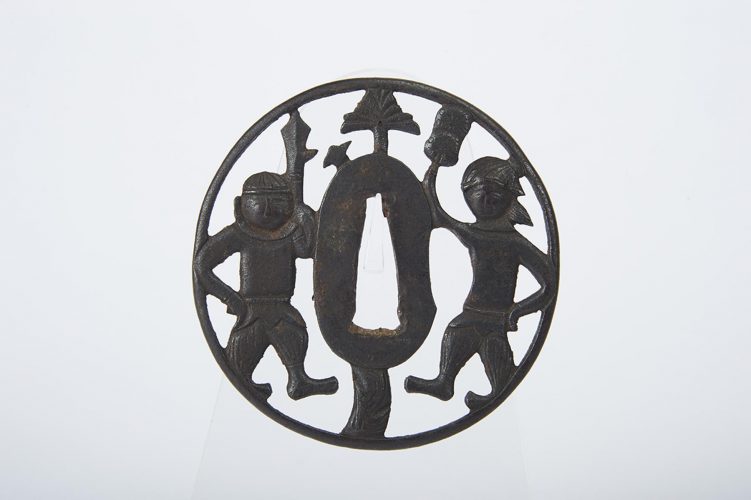
15.30-16.10 Session 3
Representing the unseen: The visualization of exotic aromatics in Northern Song China, 1057-1061
Victor Guanmian Xu – Universiteit Leiden
When is contemporary modern in China? Transnational histories in the work of Ding Yi
Sophie Mak-Schram – Universiteit Leiden
16.10-16.20 Reflection, Q&A, moderated by Prof.dr. Anne Gerritsen
16.20-16.45 Closing remarks by Prof.dr. Anne Gerritsen
16.45-17.45 Drinks at the Rijksmuseum Café
18.00 Rijksmuseum closes
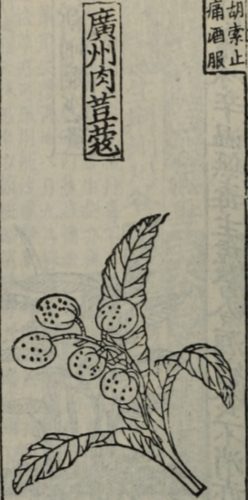
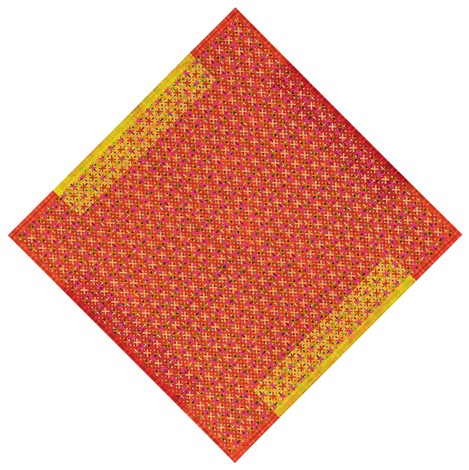
ORGANISATION
– Prof.dr. Anne Gerritsen, Chair of Asian Art, Universiteit Leiden*
– Royal Society of Asian Art in the Netherlands (KVVAK)
– Ikigai (KVVAK young professionals network)
– Rijksmuseum
– Nationaal Museum van Wereldculturen
*The Chair of Asian Art at Leiden University is sponsored by KVVAK, Hulsewé-Wazniewski Stichting, Isaac Ailion Foundation, Stichting tot Bevordering van de Studie van China aan de Universiteit Leiden, Jan Menze van Diepenstichting
With generous support from Mr. J.M. Boll
ABSTRACTS AND BIO'S
Who is the four-faced deity from Ta Prohm, Angkor, at the Rijksmuseum?
The KVVAK-owned four-faced head at the Rijksmuseum (inv.no. AK-MAK-227) fits stylistically in the art of the 12th–13th century at Angkor, Cambodia. What is less clear, however, is who is depicted. The small Buddha Amitābha on the cylindrical hairdo is a common iconographic feature of Lokeśvara, the (male) bodhisattva of compassion, but the four faces appear feminine. In Khmer art, Amitābha can be depicted on the hairdo of the (female) Buddhist deity of perfected wisdom, Prajñāpāramitā. However, these instances are rare and usually have a single face. A definite determination of AK-MAK-227, therefore, remains uncertain.
Turning to contextual evidence, we see that in the 12th–13th century various religious, political, and stylistic developments intersect in the art of Angkor. Buddhism is a state religion in this period, but other factors, too, governed the art, architecture, and inscriptions—our main sources of evidence. In the king’s Buddhist temples, elite as well as royalty installed statues of Hindu or Buddhist deities (among which Lokeśvara and Prajñāpāramitā), that could also function as deified ancestors. Based on surviving inscriptions, some of these gods/deities can be located.
AK-MAK-227 was found at such a royal Buddhist temple: Ta Prohm. Could it have been a named, donated statue, and if so, was it a deified ancestor (and who)? Which deity is it? In this paper, I will carefully examine the data we have on Ta Prohm—architecture, inscriptions and iconography—to shed more light on this enigmatic piece in the Rijksmuseum’s collection.
Danny Eijsermans studied Southeast Asian Archaeology and Art History in Leiden. Inspired by an internship at the World Monuments Fund in Cambodia, Angkor is his main research interest. Danny is currently doing a PhD research on Angkorean iconography and epigraphy at the Leiden Institute of Area Studies, and has recently been a Curatorial Fellow for Southeast Asian Art at the Smithsonian Institution’s Freer & Sackler Galleries.
-*-*-*
Shilpa Gupta and 400 jaar VOC: Connecting past and present through different ‘posts’
In 2002 artist Shilpa Gupta (Mumbai, b. 1976) was asked to participate in Upstream, in the context of the Dutch nation-wide celebration of the 400th anniversary of the establishment of the VOC. Upstream invited artists from ‘former VOC countries’ and thus answered to a call for perspectives from formerly colonized nation-states. Gupta used the art budget to buy 45 tricycles with text on the seats for disabled residents of Mumbai: one of these tricycles was displayed in the courtyard of the Maritime Museum. Simultaneously, the museum hosted an anniversary exhibition De Kleurrijke Wereld which emphasized the VOC’s continued influence in the Netherlands through displaying everyday products. Gupta also proposed a series of texts to be displayed on the museums’ outer walls, which was rejected. This paper investigates the interaction between Gupta’s art and the exhibition, where I situate both acts of display in the discourse of the celebration. I use Michel Foucault’s concept of power-knowledge, Edward Said’s notion of a cultural archive and Gloria Wekker’s analysis of a paradoxical Dutch self-image. Stuart Hall’s reflections on the tension between the two dimensions of ‘post’ in ‘post-colonial’ illuminate how Gupta’s art proposal and the Maritime Museum’s exhibition are not ‘post-colonial’ in the same way. De Kleurrijke Wereld presents a chronological ‘post’ and thus a linear relation between past and present, while Gupta’s art displays a chronological and epistemic ‘post’ in which colonial continuity is critically assessed.
Julia Alting is currently studying at SOAS, University of London as part of her Research MA Arts & Culture and MA South Asian Studies at Leiden University. Her interests lie in the intersection of aesthetics and politics within contemporary art practices; recently her research has turned towards conceptions of time in art (history) from a decolonial perspective.
-*-*-*
Shaping mosques in the nineteenth century: How colonial powers put domes to Islamic architecture in the Dutch East Indies and British Malaya
Domes, often associated with Islamic architecture, were only integrated into the Malay archipelago’s mosque architecture less than two centuries ago. Previously, mosques had always followed the local architecture, reflecting the various influences of local cultures on the diversity of Islam in Southeast Asia. For example, the Menara Kudus mosque from the sixteenth century shows Old Javanese style and Hindu-Buddhist characteristics in its architecture.
In the nineteenth century, inspired by the European version of Middle Eastern and North Indian architectural style called Victorian Moorish (in British Malaya) or Wilhelmian Moorish (in the Dutch East Indies), domes were incorporated by the colonial powers in the designs of local mosques. The colonial authorities promoted domes for mosques built by local rulers as part of Asian Exoticism that was very popular on that particular era. This same period also coincided with European colonial authorities’ efforts to regulate hajj pilgrimages from their colonies and the growing prominence of pan-Islamism ideologies.
This research will examine one of the crucial turning points in Islamic architecture history of Southeast Asia, particularly in British Malaya and the Dutch East Indies. By comparing various mosques around the Straits of Malacca, namely: the Baiturrahman Mosque (Aceh), Azizi Mosque (Langkat), Mahsun Mosque (Medan), Jamek Mosque (Kuala Lumpur), and Sultan Mosque (Singapore), this essay attempts to explore the role of the colonial government on regulating architecture and the politics of that time. Finally, the social impact of the introduction of Domes to the Muslim society in the colonies will be discussed, to see how the shaped Islamic architecture by colonial authorities affected perceptions toward identity and locality of the people.
Muhammad Buana (Louie) is an alumnus of Cosmopolis program in Colonial and Global History, Leiden University (2015). Currently, he is working as researcher at Universitas Gadjah Mada and as expert staff for Borobudur Temple’s narrations project by Indonesian Ministry of Tourism.
Natasha Santoso is a third-year bachelor student in South and Southeast Asian Studies, Leiden University. Her research interests lie in twentieth-century colonial Indonesian social and cultural history.
-*-*-*
The lacquered document case of Hendrick van Buijtenhem
In this paper, I analyze a lacquered document case (Obj. num. AK-C-2012-28) showcased in the section of the Rijksmuseum dedicated to the history of the VOC. This document case once belonged to Hendrick van Buijtenhem, opperhoofd of the VOC in Japan, on the island of Deshima, at the end of the 17th century. The surface of the document case is lavishly decorated in gold maki-e, with a depiction of a rural landscape. The document case was likely commissioned by van Buijtenhem himself while he was serving as opperhoofd and used to keep safe the documents attesting his authority.
Although not much is known about Hendrick van Buijtenhem, it is sure that he has lived in Japan for several years, and that he has travelled along the archipelago, visiting cities during the ritual hofreis to the shogunal court in Edo. It is therefore quite likely to believe that, differently from other European customers, his personal taste was affected by the several Japanese lacquers he had the chance to see while travelling. In that case, the document case would therefore not fit neither into the ‘domestic lacquers’ category, nor into the ‘hybrid/export lacquers’ category. The aim of this paper is to highlight the most distinctive features of the document case and see what influences are traceable and recognizable in the visual elements of the decoration, in order to better assess the identity of the object and gain a new insight into its history.
Francesco Montuori is currently studying at Leiden University, attending the MA in History, Arts and Culture of Asia. His research focus is on Japanese heritage policies concerning local crafts. Furthermore, he is volunteering at the Textile Research Centre in Leiden, where he is cataloguing the Japanese collection. In the future, he would like to work in museums dealing with local crafts.
-*-*-*
Jacob Coeman’s portrait of Pieter Cnoll and his family (1665): A representation of seventeenth-century Dutchness?
How to reinforce control and status, when you are a minority among a city’s diverse ethnicities? Dutch colonizers who torched the place of Batavia in 1619, knew an answer to that question. Next to changing the name of the city, adopting local symbols and objects, they commissioned portraits of influential VOC personnel that functioned as artistic testimony of the Dutch presence in Asia. Despite that the VOC did not hire artists directly, it is not surprising that newcomers were screened for their artistic skills that could be useful for the Company’s ambitions. The same goes for cleric’s assistant Jacob Jansz Coeman who arrived in Batavia in 1663. Soon after his arrival, he was commissioned to portray senior merchant Pieter Cnoll and his family.
This essay takes as its starting point the assumption that the Portrait of Pieter Cnoll and his Family, can be perceived as attempt to claim Dutch status. Despite Cornelia’s story was initially controversial as a daughter of concubine, the Japanese facial features of both Cornelia and her daughters, indirectly demonstrate Dutch pride of their special relationship with Japanese and highlight the power and spread of the Company. Resultingly, it could be argued that the portrait represents how globality is transformed into Dutchness, which is supported by the depicted ‘global’ objects by which the Cnoll family are surrounded. Therefore, instead of perceiving the Japanese facial features of Cornelia and her daughters and the depicted ‘global’ objects as ‘foreign’, the portrait of the Cnoll family might be understood as an attempt to formulate seventeenth-century Dutchness.
Hilda Groen is a first year student of the Research MA Art History of the Low Countries at Utrecht University. Her research interests focus on the global connectedness of the early modern Netherlands as represented in both visual and material culture. She holds a bachelor’s degree in Business Administration and a pre-Master’s in Art History from the University of Groningen. Currently, she is doing her internship at ING’s department of Art Management.
-*-*-*
Namban Warriors: Arms, armors and accessories. The deeper meaning of Portuguese figure decorations on war-related objects
The term ‘namban’, commonly translated as ‘Barbarians from the South’, was the label used to designate the first Westerners landing on Japanese ground, thus the Portuguese, in the sixteenth century, an encounter which was destined to exert great influences on Japanese culture throughout the Momoyama and the initial Edo period. During the Namban period, the turning point came with the introduction in Japan of the matchlock by the Portuguese merchants: the European muskets set in motion important transformations in the way battles were fought in Japan and the material culture around the warfare. The appearance of firearms triggered the necessity to improve the existing armors, leading to the birth of a new modern style called namban-dō armors. Aside from the functional changes, the aesthetic influence on weapons and related accessories was also important. Indeed, some of the main namban decorations used on these objects were focused on Christian themes or the use of Portuguese figures as subjects. If the motive behind the inclusion of Christian motifs seems evident, the same cannot be said for the latter. Is the use of representations of the Portuguese as subjects for war-related objects simply an aesthetic decision, or could we talk of ‘appropriation and integration’? What I would like to suggest is that the combination of war-related objects and Western figures might indicate a deeper view of the initial relationship between the ‘Barbarians from the South’ and the Japanese.
Martina Gonzato is a MA student at Leiden University following the track History, Arts and Culture of Asia, with a specialization in Critical Heritage. She received her Bachelor’s degree in Language, Culture and Society of Japan at Venice’s Ca’ Foscari University. Currently, her thesis research is concerned with the Japanese religious concept of genze riyaku (“this-worldly benefits”) and the moral support from ritual institutions.
-*-*-*
Representing the unseen: The visualization of exotic aromatics in Northern Song China, 1057-1061
Collecting, knowing, ordering, and visualizing exotica from overseas is a “big science” in the early modern world. Whereas that big science began to be systematically carried out by pharmacists and botanists in Europe in the later sixteenth century, the North Song Imperial State in China had managed to organize the same virtually half a millennium earlier. In an imperial drug survey commissioned by the Song Empire from 1057-1061, domestic as well as exotic medicines were collected, described, visualized, compiled, and published in an unprecedentedly systematic way.
How was it carried out? For what purpose? What is its influence on Chinese understanding of the exotic things and world? This article aims to explore these questions by focusing on the visualization of exotic aromatics in this survey. For their exotic scent, these aromatics had occupied an essential place in Chinese medical practice and daily life latest since the Tang period (618 – 907). The succeeding Song period (960–1279) witnessed a gold age of these exotic aromatics in Chinese visual, material and olfactory culture. Conventional research has largely ignored the role of the imperial drug survey in the making of such an idiosyncratic incense culture. A visual analysis of the images and text from this survey will renew our understanding of why things from the other played such a prominent place in the daily life of the seemingly “inward-looking” and “typical Chinese” empire of the Song.Victor Guanmian Xuworks on the history of taste and commodities in early modern Asia. His PhD project Exotic goods and Chinese taste: The global life of things in early modern Asia, 1300-1800(2017-2021), is generously sponsored by the PhD fellowship of the Hulsewé-Wazniewski Foundation in Leiden. Before he started his PhD, he finished a BA and MA in Colonial and Global History (both cum laude) at Leiden University.
-*-*-*
When is the Contemporary Modern in China? Transnational Histories in the Work of Ding Yi
The contextual intricacies of the 1980s and 1990s in Chinese art production involved a new access to a global market, the emergence of local and international critics, and the rise of a modern exhibitionary culture. What this means for historiographies is fascinating: Chinese art history, in language but also in analytical approach, draws its periods and political positions differently to its Euro-American counterpart.
This paper explores how influence and exchange between Asia and Euro-America produce differential readings of an art practice, and what the implications of these differential readings are for the potential of transnational historiographies. Focusing on the 1980s and 1990s of China, a time of internationalisation, the rise of art historical discourse and the emergence of a local and international art market for Chinese art, Sophie constructs a connected, rather than comparative, history of how Ding Yi’s art is historically and geographically situated.
The work of Ding Yi (1962-) is doubly legible; he is a contemporary Chinese artist in the context of the international art market, yet is periodized within Chinese art history as a modern artist who cites Cézanne and Mondrian as key source of inspiration. Through a combined approach of historiographical analysis of art historical writing in China, and a close reading of locally specific elements within Ding’s work, Sophie argues that there is a double legibility of his work; he is contextually modern and internationally contemporary. This paper contends that the bifurcated readings of Ding’s work reflect on a wider tension between national and international art histories; histories that are necessarily co-constructed through influence, trade and position, but that offer importantly different conceptions of what modern or contemporary is, and where.
Sophie Mak-Schram is a practice-based researcher, (creative) writer, and Research Masters student in Arts and Culture at Leiden University. Her research centres on questions of political visibility, national and artistic identities, and temporalities in the context of diverging modernisms. She is particularly interested in performance and the relationship between art practices and art histories.
MORE INFORMATION & CONTACT
Rosalien van der Poel and Eline van den Berg (KVVAK and Ikigai)
Willemijn van Noord and Karwin Chi-on Cheung (Nationaal Museum van Wereldculturen)
To be contacted via info@kvvak.nl
